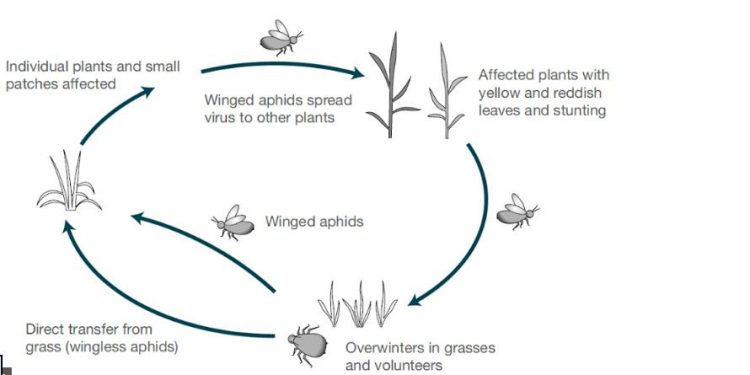Grain aphid (Sitobion avenae) is an important vector of Barley yellow dwarf virus (BYDV) in cereals and can transmit Potato virus Y (PVY) in potatoes.
Initially, aphids colonise relatively few cereal plants. However, the second generation tends to move away from the plant originally colonised. Controlling this generation is a key part of a BYDV management strategy.
The grain aphid is 1.3–3.3 mm long, ranges from green to reddish-brown to almost black and has long, yellow legs with dark patches. The siphunculi (at the rear) are black.
- Dec–Mar: Adults overwinter on crops and grasses (they do not have an alternative woody winter host).
- Apr–Jul: Fresh migrations infest crops from April. During dry, settled weather, numbers can increase rapidly. Migration during late June and early July (e.g. from cereals) poses the greatest risk to potato crops.
- Apr–Aug: Direct feeding occurs. When severe, leaves yellow and senesce prematurely.
- Sep–Mar: In autumn, winged forms migrate to newly emerged cereal crops (in most years, aphid flights stop when temperatures drop below about 11ºC), where multiple generations occur.*
Some grain aphids have a sexual life cycle, with eggs laid in the autumn on grasses and cereals. These eggs can survive through the winter and hatch in spring.
Reference: https://ahdb.org.uk/knowledge-library/
Error




